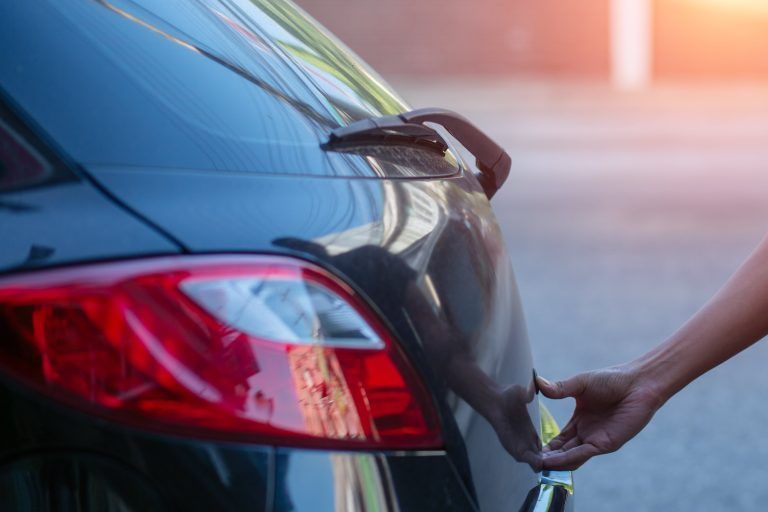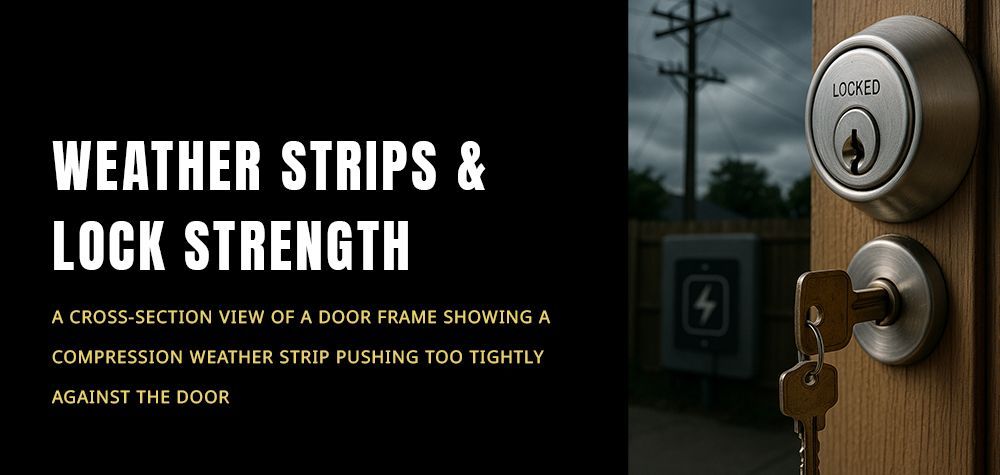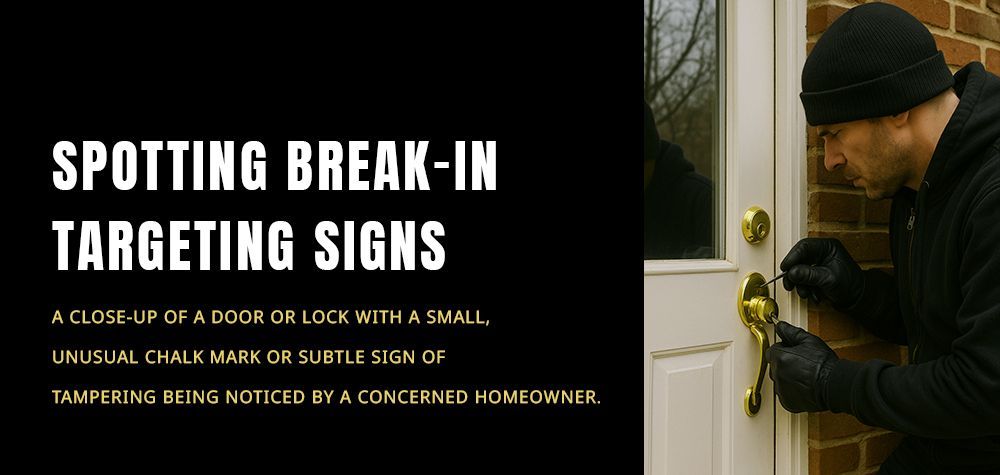How to Open a Locked Car Trunk Without a Key
Locked out of your car trunk with no spare key in sight? Don't panic! Finding yourself in this predicament can be frustrating, but there are several methods you can try to regain access to your trunk without the need for a key. Whether you've accidentally locked your keys inside the trunk or lost them altogether, these techniques can help you get back on the road swiftly and with minimal hassle.
In this guide, we'll explore seven effective ways to unlock your car trunk without a key, ranging from traditional techniques like the slim-jim and coat hanger methods to more modern approaches involving technology and professional assistance. With a bit of ingenuity and the right tools, you can safely and efficiently overcome the challenge of a locked car trunk and retrieve your belongings in no time.
Read more about What to do when car won't open from inside!
7 Effective Methods to Unlock Your Car Trunk Without a Key
Slim Jim Technique: Unlocking Your Car Trunk with Precision
The Slim Jim technique is a classic method used by locksmiths and car enthusiasts alike to unlock car doors, but it can also be applied to open a locked car trunk. This slender, flat metal tool is designed to manipulate the locking mechanism inside the door or trunk without causing damage to the vehicle.
To employ the Slim Jim technique, you'll need a slim jim tool specifically designed for automotive lockouts.
Method
- Prepare the Slim Jim: Obtain a slim jim tool specifically designed for automotive lockouts.
- Position the Tool: Slide the slim jim between the window and the weather stripping on the driver's side of the car.
- Locate the Locking Mechanism: Carefully maneuver the slim jim until you reach the trunk lock mechanism.
- Identify the Mechanism: Determine the position and structure of the locking mechanism, which may vary depending on your vehicle's make and model.
- Manipulate the Lock: With the slim jim in place, gently manipulate the locking mechanism to disengage it.
- Listen and Feel: Pay attention for any audible clicks or changes in resistance that indicate the trunk is unlocking.
- Exercise Caution: Work slowly and steadily to avoid damaging the interior of the car or triggering alarms.
- Test the Trunk: Once you believe the trunk is unlocked, attempt to open it using the external release or trunk handle.
Coat Hanger Method: Unleashing Your Car Trunk's Lock
The coat hanger method is a DIY approach commonly used to unlock car doors, but it can also be adapted to open a locked car trunk. This technique involves fashioning a wire coat hanger into a makeshift tool to manipulate the trunk's locking mechanism from the inside.
Method:
- Prepare the Coat Hanger: Straighten a wire coat hanger and bend one end to form a small hook, which will serve as the tool for unlocking the trunk.
- Insert the Hanger: Carefully insert the hooked end of the coat hanger through a slightly open window or any available gap in the car's exterior.
- Target the Trunk Release: Maneuver the coat hanger inside the vehicle, aiming to reach the trunk release lever located within arm's reach.
- Latch onto the Release: Once inside, use the hook to grasp and pull the trunk release lever, which should unlock the trunk.
- Test the Trunk: Once you believe the trunk is unlocked, attempt to open it using the external release or trunk handle.
- Exercise Caution: Be gentle during the process to avoid damaging the interior of the car, and take care to avoid setting off any alarms.

Key Fob Signal Amplification: Harnessing Technology to Unlock Your Car Trunk
Key fobs have revolutionized the way we access and secure our vehicles, but what happens when you're locked out without your key? The key fob signal amplification method offers a modern solution by leveraging technology to extend the reach of your key fob's signal, granting access to your car trunk even when the key is out of reach.
Method:
- Gather Your Tools: Obtain a signal amplifier device or smartphone app capable of boosting the signal of your key fob.
- Position Yourself: Stand close to the locked car with the amplifier device, while someone else holds the key fob near the trunk.
- Activate the Amplifier: Turn on the signal amplifier device or launch the smartphone app, ensuring it's ready to boost the key fob signal.
- Trigger the Release: With the key fob held near the trunk, activate the trunk release button on the fob or use the app to send the signal.
- Test the Trunk: Once you believe the trunk is unlocked, attempt to open it using the external release or trunk handle.
- Exercise Caution: Ensure the amplifier is compatible with your key fob and exercise caution to prevent unintended signal interference.
Read more about Why is my car door not opening !
Locksmith Assistance: Trusting Professionals to Unlock Your Car Trunk Safely
When all else fails and you find yourself unable to unlock your car trunk, enlisting the help of a professional locksmith is often the wisest choice. Locksmiths possess the expertise, specialized tools, and experience necessary to safely and efficiently unlock car trunks without causing damage to your vehicle.
Method:
- Contact a Reputable Locksmith: Research and contact a reputable locksmith service in your area known for automotive lockout assistance.
- Provide Details: Provide the locksmith with essential details such as your location, vehicle make and model, and the nature of the lockout situation.
- Wait for Assistance: Await the arrival of the locksmith, who will typically respond promptly to your call for assistance.
- Assessment and Action: Upon arrival, the locksmith will assess the situation, determine the most suitable approach, and proceed with unlocking your car trunk.
- Professional Expertise: Utilizing specialized tools and techniques, the locksmith will work diligently to unlock the trunk while minimizing the risk of damage to your vehicle.
- Retrieve Your Belongings: Once the trunk is successfully unlocked, you can retrieve your belongings and resume your day with peace of mind.
- Consider Preventative Measures: Take the opportunity to inquire about additional security measures or spare key options to prevent future lockouts.
Using a Shoelace: A Simple Yet Effective Method to Unlock Your Car Trunk
When faced with a locked car trunk and lacking traditional tools, a simple shoelace can serve as a surprisingly effective tool for gaining access. This method works best for cars equipped with pull-up trunk releases located inside the vehicle, allowing you to manipulate the release mechanism with ease.
Method:
- Select a Sturdy Shoelace: Choose a shoelace that is long enough to reach from the top corner of the door to the trunk release mechanism inside the car. A sturdy shoelace made of nylon or similar material works best.
- Tie a Small Loop: Tie a small loop at one end of the shoelace, ensuring it is secure and won't slip off during the process.
- Insert the Shoelace: Insert the other end of the shoelace through the top corner of the door where the weather stripping meets the car frame. This should create a pathway from the exterior of the car to the interior.
- Maneuver the Loop: Maneuver the looped end of the shoelace around the trunk release mechanism, which is typically located near the driver's seat or on the floor of the vehicle.
- Pull to Release: Once the loop is positioned around the release mechanism, pull firmly on the shoelace to activate the trunk release. You may need to experiment with the angle and positioning to achieve success.
- Test the Trunk: Once you believe the trunk is unlocked, attempt to open it using the external release or trunk handle.
- Exercise Caution: Take care not to damage the interior of the car or trigger any alarms during the process, and be patient as you work to manipulate the release mechanism.
Read more about how to open a frozen car door!
Drilling the Lock: A Last Resort Method for Unlocking Your Car Trunk
When all other methods have failed and you're left with no alternative, drilling the lock may provide a last resort solution to unlock your car trunk. While this method should be approached with caution due to the risk of damage to your vehicle, it can be effective in situations where other options are unavailable or unsuccessful.
Method:
- Gather Necessary Tools: Equip yourself with a power drill, drill bits suitable for metal, and protective eyewear to ensure safety during the process.
- Choose a Drill Point: Select a spot near the trunk lock mechanism where drilling is least likely to cause extensive damage. Aim for a location where repairs can be made without compromising the integrity of the trunk.
- Drill Carefully: With the drill set to a low speed and torque setting, begin drilling a hole near the lock mechanism. Exercise caution to avoid damaging surrounding components or wiring.
- Create a Hole: Continue drilling until you've created a small hole through the metal surrounding the lock mechanism. Take care not to drill too deeply or forcefully, as this could worsen the situation.
- Manipulate the Lock: Once the hole is made, use a screwdriver or other sturdy tool to reach through the opening and manipulate the lock mechanism from the inside.
- Unlock the Trunk: Apply gentle pressure and maneuver the tool as needed to disengage the lock and unlock the trunk.
- Test the Trunk: Once you believe the trunk is unlocked, attempt to open it using the external release or trunk handle.
- Consider Repairs: After gaining access to the trunk, assess the damage caused by drilling and consider seeking professional repairs to restore the lock and surrounding components.
Roadside Assistance: A Reliable Solution for Unlocking Your Car Trunk
When faced with a locked car trunk and no immediate means of access, calling roadside assistance can provide a swift and reliable solution to your predicament. Roadside assistance services are equipped with the tools and expertise necessary to unlock car trunks safely and efficiently, ensuring minimal disruption to your day.
Method:
- Contact Roadside Assistance: Dial the number for your roadside assistance provider or use a mobile app to request help. Be prepared to provide details such as your location, vehicle make and model, and the nature of the lockout situation.
- Request Trunk Unlocking: Inform the roadside assistance operator that you require assistance unlocking your car trunk. They will dispatch a qualified technician to your location to assist you.
- Wait for Assistance: Await the arrival of the roadside assistance technician, who will typically respond promptly to your call for help.
- Assessment and Action: Upon arrival, the technician will assess the situation, determine the most appropriate method for unlocking the trunk, and proceed with the necessary steps.
- Professional Expertise: Utilizing specialized tools and techniques, the technician will work diligently to unlock the trunk while minimizing the risk of damage to your vehicle.
- Retrieve Your Belongings: Once the trunk is successfully unlocked, you can retrieve your belongings and resume your day with peace of mind.
- Consider Preventative Measures: Take the opportunity to inquire about additional services or preventative measures to avoid future lockouts, such as spare key options or keyless entry systems.
Call Us Any Time!









